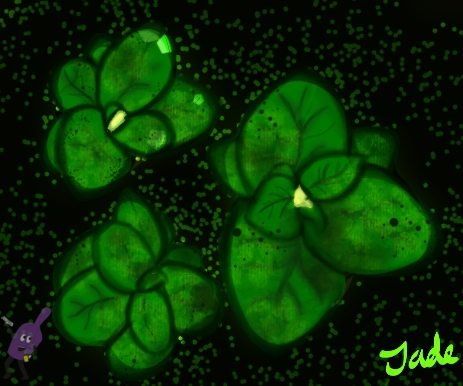
With only 19% of Americans saying they are satisfied with the state of our country, it’s no secret that we need something to lighten the mood. Fortunately for us, scientists have been hard at work to come up with a new bioluminescent petunia to brighten all our days. The Firefly petunia has arrived.
The firefly petunia was approved last fall by the US department of agriculture and has since made its appearance around the world. It glows green in the dark and in the day appears a crisp white. While as of now no other color varieties are available, they are a work in progress so fret not.

This show-stopping creation was a joint effort between a biotechnology firm in Idaho run by Keith Wood called Light Bio and its co-founders: Karen Sarkisyan at the Laboratory of Medical Sciences in London, and Iliya Yampolsky at the National Research Medical University in Moscow.
Despite the assurances of these scientists, many are skeptical about genetically modified flowers and are hesitant to add firefly petunias to their gardens. But worry not, the firefly has been confirmed as non-invasive to America.
It was engineered by the addition of five mushroom genes (from the Neonothopanus nambi) to provide an enzyme that can transform caffeic acid into luciferin (which emits light) and then recycle that luciferin back into caffeic acid. This, in effect, creates a continuous loop allowing fireflies to constantly glow without the need for special chemicals or UV light.
Luciferin is involved in all chemical reactions in plants that produce light and is an enzyme that increases the rate of chemical reactions. By allowing these petunias (which normally would not contain luciferin) to recycle and produce their own luciferin, Wood has produced one of the first bioluminescent plants of this type.
Previously, bioluminescent engineering had only managed to produce light for a few hours without an outside source to excite the proteins into producing light again. This was because of a difference in the genes used and the engineering process.
Keith Wood has been working on producing bioluminescent plants since the 1980s in order to research gene expression. In seeing the captivating glow of his creation, he made the decision to sell these plants to the public. His petunias have inspired other scientists, such as Mr. Orzaez, who is a scientist working on using luciferin to establish communication lines between plants. He plans on using variations of mushroom genetics and luciferin to allow the plants to react to a change in the environment.
These communication lines could be used to gain early knowledge about diseases or viruses infecting crops and Orzeaz highlights the fact that “Genetic engineering can be used for the good of humanity” and urges the public to support this growing area of study.
This April, Light Bio will ship 50,000 firefly petunias out for the US to purchase at only $29 a piece, which means it could be our year to step up gardens to a new level. They provide a pre order form on their website and will ship these plants directly to your door. With the addition of these petunias, not only can you enjoy your garden in the day, but also admire its green glow outside your window at night. They’ve even been compared to the ethereal glow of the full moon.
So how does one go about growing these magical flowers? They do not require intensive care and as with their lightless counterparts, they only need about 6 hours of direct sunlight and a 10 inches of space to flourish. Still, there are some tricks–which are applicable to almost any plant–to know before you grow.
Creating the proper soil
Before you plant your glowing companions you will want to make sure you achieve the proper pH and sediment size in your soil. Petunias prefer a sandy loam soil which is well draining and well aerated for optimum root growth. They also require a pH between 6 and 7 which allows for quite a large range of soil types and location. This should be easily achievable so long as you do not receive acid rain.
Preventing predation
If you live in Missoula you know about deer. And these are no regular deer, they are demon deer. They will eat everything including any petunias you try to plant. Because of this, there is only one option. You must plant your flowers in a strictly fenced area or on a second story. Anything less and you will end up crying over a basket of stems and half chewed flowers.
Deer are not the only thing to worry about though, you should also look out for insects such as slugs. Slugs will attack forbes such as petunias and chew through leaves and flowers alike. These greasy little goobers can be easily captured with a moat of beer. All you need to do is place a small container of beer level with the ground and wait for them to wiggle their way in.
When to plant your petunias
The first thing to check when planting this spring is that the frost is over. Check the temperatures at night and make sure that it will be consistently above freezing as petunias are highly susceptible to cold. You will also want to make sure that your area is constantly receiving light. Once you’ve done that and the weather is permitting, plant away and wait for the green glow to let you know your petunias are doing well.
Wood has high hopes for the success of his fiery flowers and is looking forward to creating more variety within light bio. In fact, there are rumors of glowing roses just around the corner. This means we could have light up gardens to look forward to in the near future. A relief to all.
The ingenuity of our world is increasing rapidly and with it so must we. Opportunity for growth has flung itself upon us and I say: bring on the flowers.




